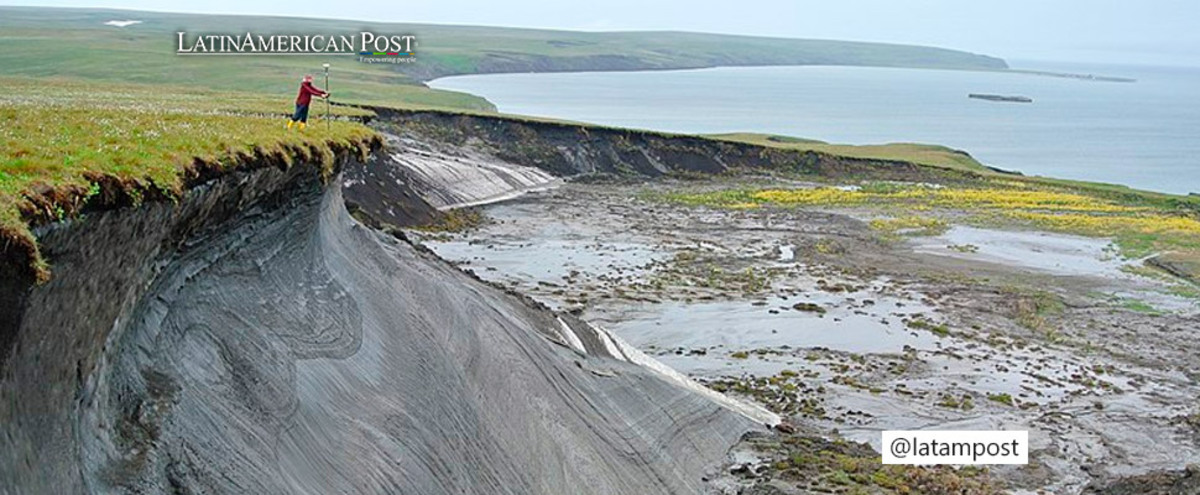Melting Permafrost: An Invisible Threat of Climate Change
The melting of permafrost poses a great threat to the environment and even to human health.

Photo: Boris Radosavljevic
LatinAmerican Post | July Vanesa López Romero
Escucha este artículo
Leer en español: El derretimiento del permafrost: una amenaza invisible del cambio climático
In recent weeks, permafrost has become popular due to the news of the discovery of a "zombie" virus that was recently revived by scientists in a laboratory. Although it is true that viruses have been found in the permafrost, and one of these was revived, making it infectious, this happened for the first time in 2014. This was cultivated in amoebas after having verified that it could only attack these unicellular organisms and not animals or humans. The team, led by the virologist Jean-Michel Claverie, repeated the exercise in 2015. Its most recent publication was in February of this year, where it documented 5 new virus strains found in Siberia, which also infect amoebas. However, Claverie says that this could eventually pose a public health risk.
What is permafrost and why is its melting dangerous?
Permafrost is a layer of frozen ground found in cold regions of the world, such as Siberia, the Arctic, and Alaska. This layer remains frozen throughout the year and acts as a kind of natural "carbon store", since it contains large amounts of frozen organic matter; In addition, it works as a habitat for microbes and bacteria.
Also read: Cyclone Freddy in Africa is About to Become the Longest in History
The high temperatures generated by climate change cause the melting of the permafrost, which is why this phenomenon is considered one more threat to the environmental crisis. When permafrost thaws, there is a release of toxic substances that have been stored for decades and even centuries, such as mercury, which can contaminate drinking water sources and soil. Likewise, said organic matter begins to decompose and releases large amounts of carbon dioxide and methane into the atmosphere, which significantly contributes to global warming, turning it into a cyclical process.
On the other hand, this phenomenon directly affects biodiversity in the permafrost, as this is home to a variety of animal and plant species adapted to the extreme conditions of the Arctic climate.
Is there a risk to human health and safety?
Soil instability caused by melting can also cause landslides and geological catastrophes that directly alter local communities. Also, while the virus found by Claverie and her team is not dangerous to humans, their discovery has raised concerns about the release of other dangerous pathogens and microbes that may be trapped in permafrost. The release of these pathogens could have serious consequences for human health and the environment. Permafrost is an ideal breeding ground for microbes, since oxygen levels are low and the temperature is constant. Also, some pathogens, such as Bacillus anthracis, the bacterium that causes anthrax, can survive in permafrost for hundreds of years.
A silent threat that needs more attention
In short, the melting of permafrost is a silent but compelling threat in climate change. It is essential to take steps to reduce greenhouse gas emissions, which means reducing the burning of fossil fuels and fostering the transition to renewable energy sources.
In addition to these long-term measures, steps are also being taken to protect the existing permafrost. Scientists are working to develop ways to cover the permafrost with insulating materials to reduce your exposure to heat. Engineering solutions are also being explored to strengthen infrastructure found in regions with permafrost, such as roads and buildings.
Permafrost is an important component of the global climate system, and any significant change in its state could have major implications for the climate, biodiversity, and the communities that depend on it.




